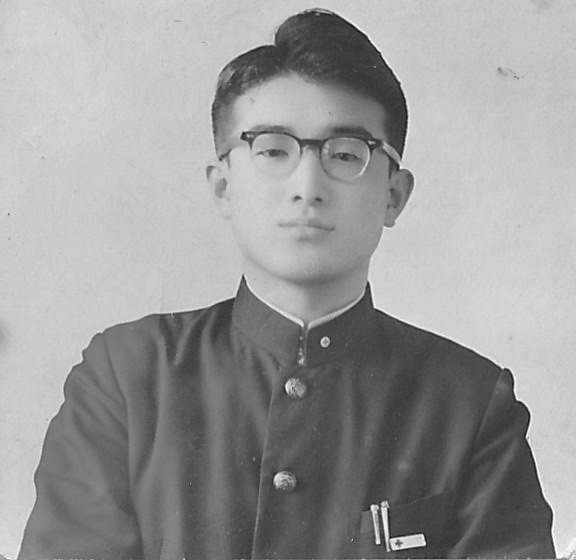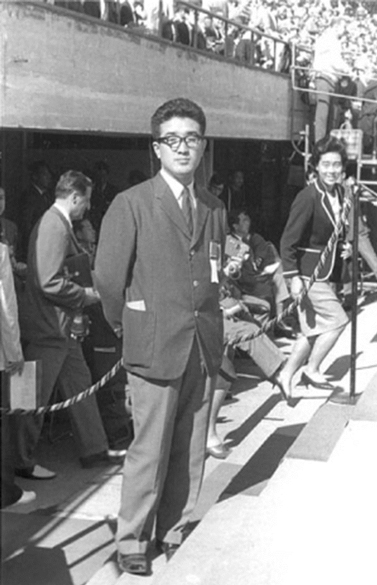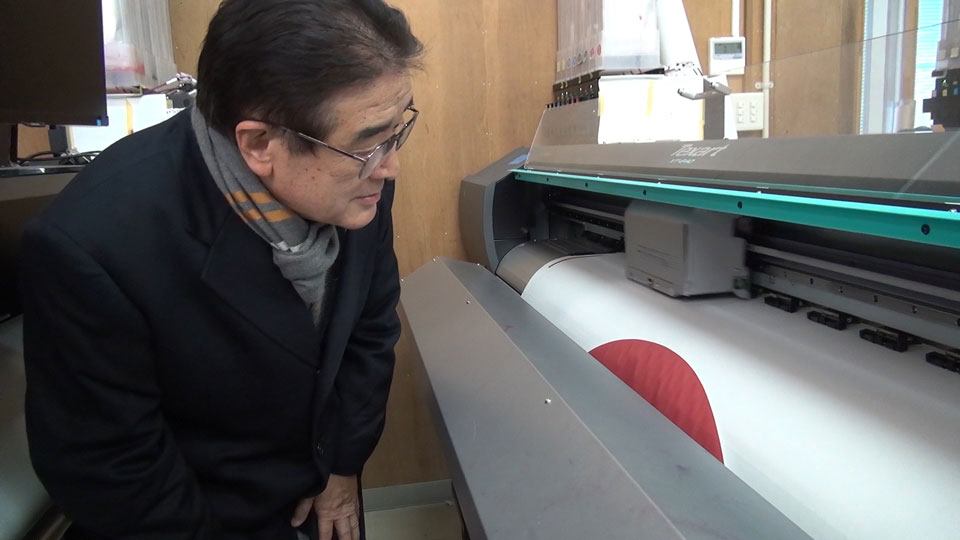Fukiura is such a fan of flags that he wrote two books on the subject in his university days. So when the organizers of the 1964 Tokyo Olympics needed someone to oversee the banners at the big event, he was the natural choice.
"I was more nervous than happy to get the job. But I thought if I don't do it, who else could?" he says.
Fukiura played the same role at the 1972 and 1998 Winter Olympics, and he will be doing it again this summer.
A checkered history
In 1964, Fukiura was still a university student and was the youngest member of the organizing committee.

"At the time, committee members were feeling a lot of anxiety rather than excitement. They hadn't quite gotten over a traumatic mistake at a big, international multi-sport event in Tokyo a few years earlier," he says. "At one of the award ceremonies, Taiwan's flag was raised upside down."
Fukiura said he was told at his job interview that his one and only task was to raise the correct flags in the correct way.
Picking the palette
Fukiura began preparing two and a half years before the Games. He made a list of countries that were likely to be taking part, then noted the colors in their flags, and tried to figure out the exact tones for each one.
"Nowadays the colors on flags are defined by a code, but half a century ago they weren't. For example, we struggled with blue. There are so many different shades," he says. It took him a year to settle on four shades he would use across all the flags.
And blue wasn't the most difficult color. "The hardest was actually the one used in our own flag -- red," he says.
Japan's flag is white with a red circle in the middle. But until 1999 there was no official policy on what shade of red it should be.
"No one had a clear answer," recalls Fukiura. "So I worked with researchers from a lipstick company's research lab, who were experts on the color red. We collected 500 flags from random homes across Japan, and we determined the average red and used it for the official flag."
Weather resistance is a must!
When he was finally happy with the colors, Fukiura moved onto materials. He tested three -- nylon, wool and acrylic -- hanging each of them in the national stadium for 15 days. On day nine, the flag made from wool was torn apart. On day 11, the nylon flag began to lose its color.
"Most flags were made from wool at the time, and some people were offended by using a synthetic material for national flags," says Fukiura. "But I insisted we had to use acrylic, based on the results of our experiment."
Flag makers enjoy new role
The job of actually printing the flags went to three companies in Tokyo and Osaka. There were no inkjet printers in the 1960s, so each of the roughly 3,000 flags had to be dyed and sewn by hand.
"There was joy as well as hardship for the flag makers," says Fukiura, who recalls the head of one of the companies thanking him with tears in his eyes.
"During World War Two, the company was making national flags for the war. The company boss told me he was so happy to make them for peace this time. It was truly significant for all Japanese to host the Olympics."

On October 7th, 1964, three days before the opening ceremony, Fukiura stood in the national stadium for a final check.
"There was a feeling of 'I've done it'. I was confident I hadn't made any mistakes. But it felt more like a start than an end for me," he says.
Gearing up for Tokyo 2020
And 56 years on he's still in that role. Four factories are turning out more than 10,000 official flags for the second Tokyo Olympics.

There have been technological leaps in the intervening years, but Fukiura says it still needs a human touch. The printing companies can turn out banners faster and more easily than ever before, but there is only one person who has been through the whole process from blueprints to hoisting.

